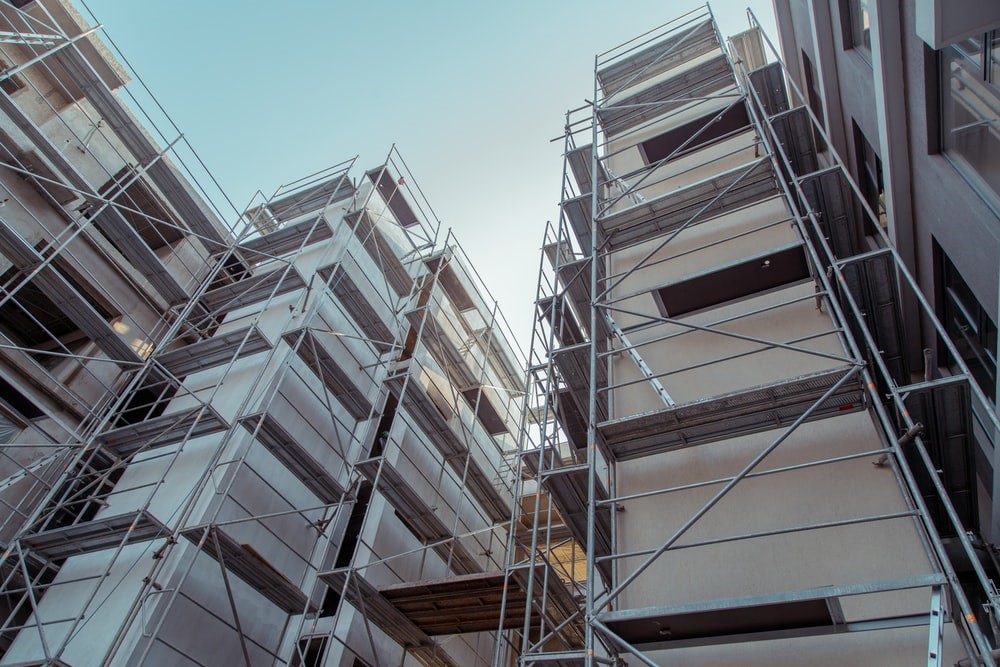October 20th, 2021. Mark Hughes
Cladding Issues in 2021: What You Need to Know
Since the Grenfell Tower disaster in 2017, there has been a heightened awareness of fire safety in residential buildings, particularly tower blocks, and the issue of unsafe cladding in 2021 is as large as ever. While fire safety reviews have led to a number of legislative changes here in the UK, many buildings are yet to be properly assessed or updated in line with the new safety rules. What does this mean for residents and property owners? Read about the latest changes and guidance below.

The Problem with Cladding
Over four years on since the worst residential fire in the UK since World War II, there are still an estimated 3 million properties that are currently unsellable as lenders are requiring proof they are safe. As a result, there may still be up to 11 million people living in properties with unsafe cladding.
Following the December 2018 ‘advice note 14’ from the UK government, clear guidance was set up for building owners and lending criteria became stricter overnight. This has caused numerous financial issues as a result, with thousands of leaseholders becoming ‘mortgage prisoners’.
In buildings with a cladding issue, mortgage acquisition and remortgaging are on hold until repairs are made, as buildings do not meet the new legislation. Buyers are having mortgages rejected because the building (or their flat within the building) has not been signed off as safe, and owners cannot remortgage at the end of their fixed rate contracts, resulting in varying (and often high) interest rates.
Furthermore, a number of large construction projects now have delayed sign-off and new properties cannot be sold until the cladding has been updated. For any still willing to invest, properties are higher risk as purchasing may come with the burden of cladding replacement costs or lower tenant demand due to the below-par fire safety standards.
What is the EWS1 Form?
The UK government brought in a new industry-wide form in December 2019 to help improve the building assessment process and provide assurances to lenders, valuers, residents, buyers, and sellers that buildings meet the current fire safety standards. Under RICS guidance, the EWS1 form:
‘Is a set way for a building owner to confirm that an external wall system on residential buildings has been assessed for safety by a suitable expert, in line with government guidance.’
A completed External Wall Fire Review form, endorsed by the Royal Institution of Chartered Surveyors, UK Finance and the Building Societies Association, can help make buying or remortgaging smoother and potentially avoid delays with finance providers.
Cladding Repairs: Who Pays?
While the freeholder is ultimately responsible for the building’s safety and the EWS1, this doesn’t necessarily mean they are responsible for the associated costs.
Depending on the lease agreement in place, many flat owners or tenants may find themselves on the hook for cladding replacement costs and organising the necessary forms. As costs can run into tens of thousands of pounds, this is a price that many can’t afford.
In February, the government set aside £3.5bn for cladding repairs on unsafe buildings, but the funding has been criticised as insufficient. Furthermore, as the funds only apply to residential buildings 18m (six storeys) or higher in England, many are not eligible for the support. A member of the End Our Cladding Scandal group said:
“Many people living in buildings under 18m will still have to bear the cost – for many above £30,000 – saddled with debt around their necks for 30 years.”
Recent Developments
In March 2021, RICS released new guidance to clarify which types of properties will require additional inspections due to concerns about fire safety. Dame Janet Paraskeva, chair of the RICS Standards and Regulation Board, said:
“We recognise the significant distress caused to leaseholders struggling to sell flats in blocks with external cladding. This announcement is a crucial step in unlocking the market, by ensuring that only those buildings where there are risks of costly remediation as a result of safety concerns from cladding are subject to additional checks. The guidance is anticipated to result in a reduction in the number of EWS1 requests which will therefore allow more focus on the assessments of higher risk buildings, which should speed up the overall process whilst ensuring appropriate protection for lenders and purchasers.”
Additionally, the government announced in July that fewer flat buyers will face pre-mortgage cladding checks. The new change means people purchasing flats in buildings lower than 18m (59ft) in England will be exempt from providing safety details on external walls in order to get a mortgage.
What Affect Have We Seen on Borrowing?
As specialist finance brokers, we’re used to dealing with out-of-the-norm lending situations and, although we have had few cases of our own affected by cladding issues, we are aware of a number of lenders who have published criteria stating their acceptance of EWS1s. However, the majority of lenders are less committal and will instead refer to manual underwriting and take a view on lending on a case-by-case basis.
It is also important to note that cladding isn’t the only complication when it comes to high-rise flats. Some lenders also have restrictions in their criteria that says they won’t offer finance on a space higher than a certain number of floors in a building. So when considering an investment, considering the property’s physical location is important.
If you find yourself in need of property finance in out of the norm circumstances, get in touch with our experienced team today to see how we can help you secure the funds you need.
Edit: Updated 20/10/2021, first published 26/10/2020
Article By Mark Hughes
October 20th, 2021
Mark has 15 years’ experience within the financial industry working for high street banks and specialist brokers and now focuses on Bridging finance and Second charge loans.
He would describe his style of brokering as being heavily based on knowledge and efficiency.
See more articles by Mark




